On Thursday I continued my major in fish printing with the class in Fish Printing in the Field by Ian Workman of Cudjoe Key, Florida.
Ian (shown below with Charlotte, another workshop participant) looks and talks a lot like someone you can easily picture hanging around the keys having a beer with Jimmy Buffet.
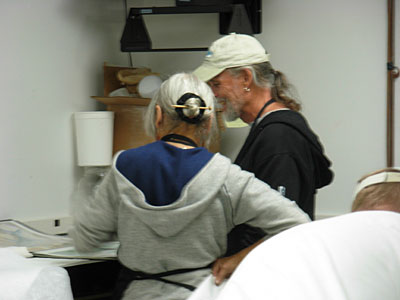
We didn’t go out in the field printing fish in this workshop, but Ian showed us some of the things he does to get good prints out on boats or at the end of a fishing tournament where the participants want a record of their catch before they take it back to cook, or when he has two minutes to demonstrate making a print during an interview on a Miami TV news program. The woman in the pink top, incidently, is Laurie from North Carolina. She got some gorgeous prints of a dragonfly in the foilography class on Friday, which I’ll show you in a future post.
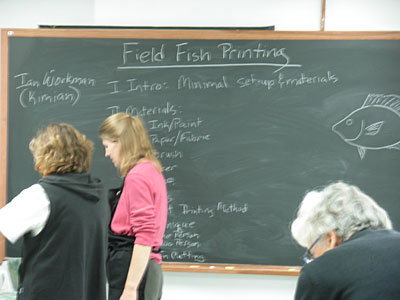
Ian’s method is basically to wash up the fish and get it as dry as you can, ink the body and tail of the fish, have someone else help you hold the paper steady while you rub the paper down all over the fish’s body to print it, then have the assistant hold the paper steady with one hand and lift it up off the fins with the other while you ink the fin, then spread the fin out with the fingers of one hand while rubbing the paper down from above to print that fin with the other hand. This obviously takes a demonstration and takes a lot of practice to work well. Here’s Susan, one of the most enthusiastic and generally most fun people at the conference, practicing. That orange band on her T-shirt is a stripe of leaves printed with SoftScrub, which bleaches out the color where you print, giving a light print on dark fabric.
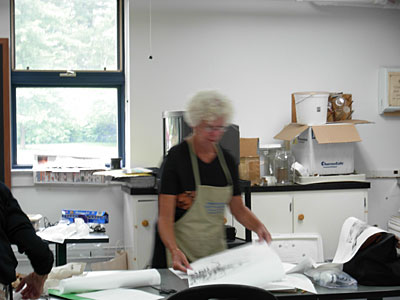
By the time I had had a lot of practice, late in the afternoon, the fish were getting fairly ripe. Although they were spending the nights in a cooler, they had been out of the cooler being printed for three full days. People wandering into the zoology lab, where the class was, tended not to stay long. We were thinking, old fish printers never die, they just smell that way.
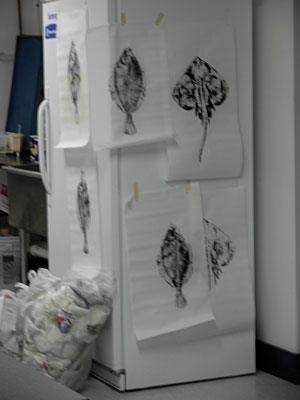
I spent a lot of the morning trying to print a sculpin and not getting very good results. Then I did several prints of just the head and front fins of something that looked reminiscent of a haddock, with mixed results. Late in the day a flounder was available on the desk next to my space, and I got two prints of it that I was very pleased with.
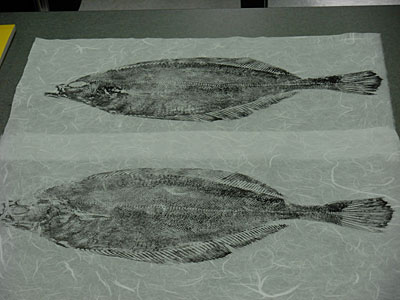
One of the best parts of Ian’s presentation was a demonstration of how to cheat on prints, I mean embellish and correct prints, by adding stippling and drawing in some lines where things didn’t print as well as you wanted, for instance around fins. I worked on one of my sculpin prints and got it much much better than it had been originally.
The fish is kaput !
Really beautiful prints. However I musy confess to being a little squeamish about handling the shall I say subjects. Fish is one thing, but the thought of the little frog makes me sad.